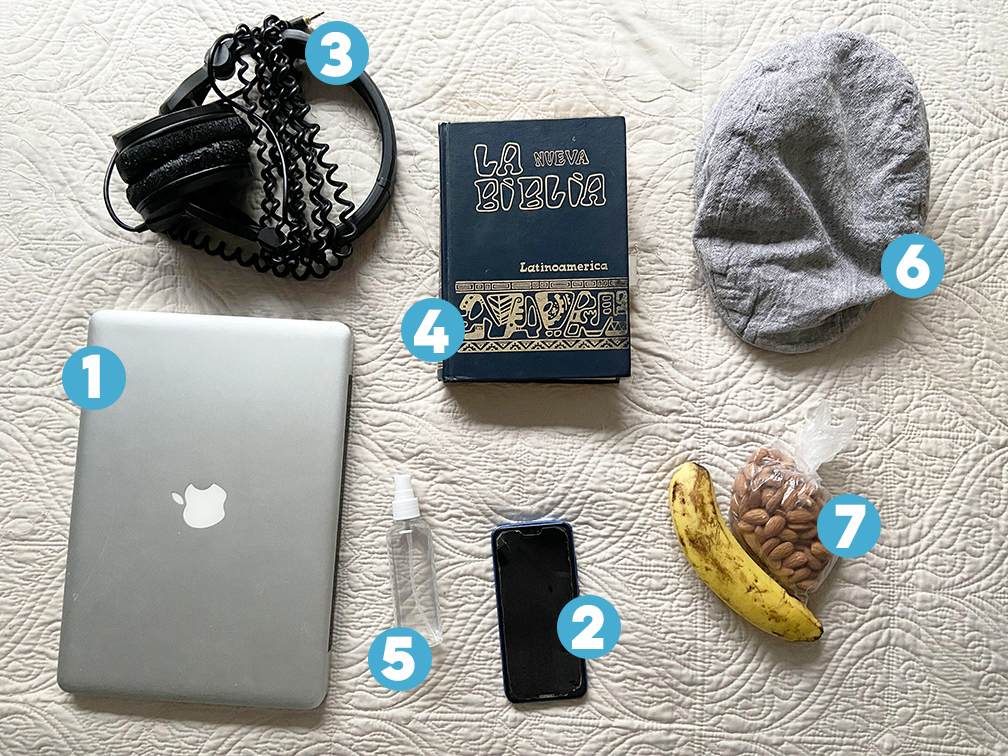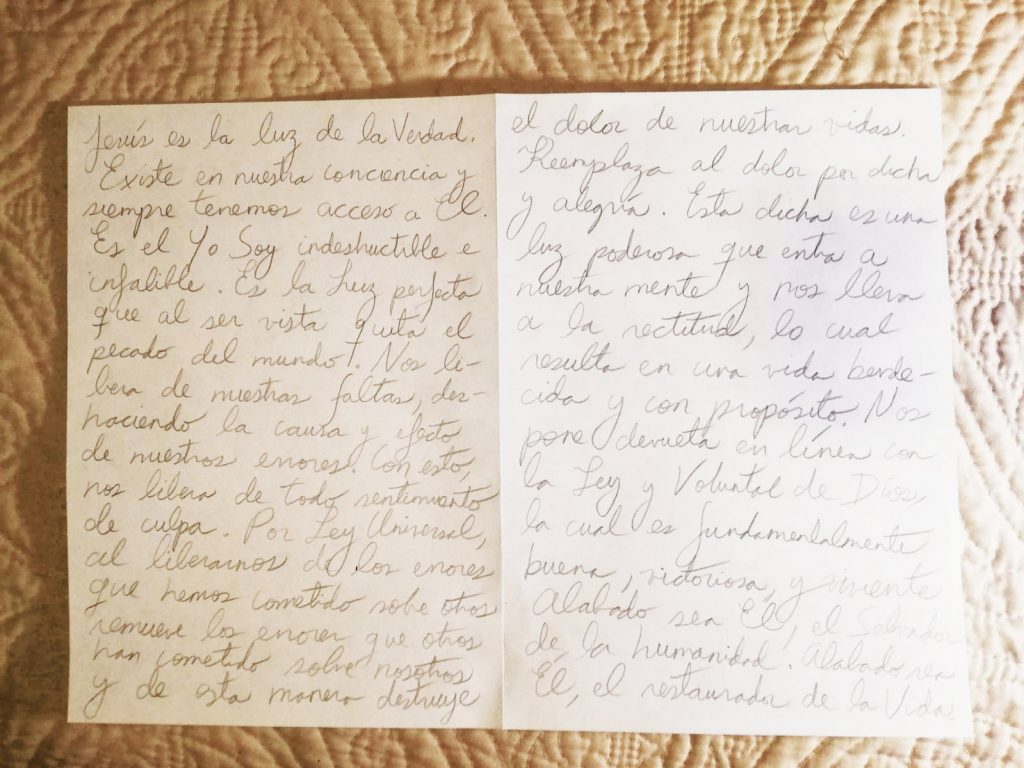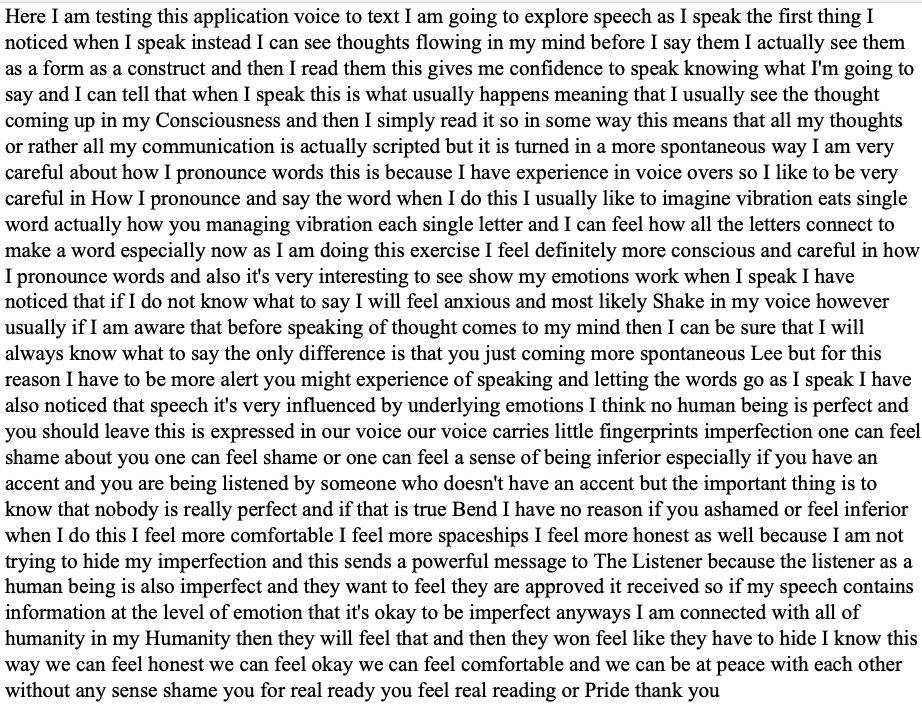First, some information about me.
 My name is Eduardo and this is my third semester in the MET program, taking my 5th and 6th course. I love this program and have learned a lot since I started it. I was born in Canada and grew up in Peru, where I currently live. I went back to Canada for a few years to study music and multimedia production at York University in Toronto. Professionally, I work at a university here in Lima teaching music production courses. Simultaneously, I work as a music producer and multimedia artist.
My name is Eduardo and this is my third semester in the MET program, taking my 5th and 6th course. I love this program and have learned a lot since I started it. I was born in Canada and grew up in Peru, where I currently live. I went back to Canada for a few years to study music and multimedia production at York University in Toronto. Professionally, I work at a university here in Lima teaching music production courses. Simultaneously, I work as a music producer and multimedia artist.
Moving on to the task.

During this pandemic period, I haven’t used a bag. So for this “What’s in your bag?” exercise I’ve constructed a simulation of what would be in a bag if I was going somewhere today or catching a plane.
The objects are:
- Cellphone
- Laptop
- Professional headphones
- Christian Bible
- Hand sanitizer
- Hat
- Bag of almonds and a banana
It’s interesting to see how these items are “texts” that provide information about my identity, culture, and lifestyle. I will elaborate briefly on each item.
1. Cellphone
This item provides information about being an individual who is connected to the world through technology. At first glance, the cellphone reveals that I use spoken language to communicate with other people. However, I rarely use this object for this function. It would be more accurate to read this object as a smartphone and recognize that the communication happens primarily in written formats.
2. Laptop
This item also provides information about my connectivity with the world, as it is very unlikely that a computer is not used in some way to navigate the internet. The difference with the cellphone is that this is a larger and more capable tool, which indicates that this is a technology used for work. As such, it can be seen as a survival tool, or a tool for creativity, if my identity as a music producer and multimedia artist is considered. The object also gives information about a preference for Mac computers.
3. Professional headphones
This item provides information about being someone who engages in auditory experiences. This is an important trait of my personality, as l am very sensitive to sound and have a preference for auditory outputs. By itself, the object doesn’t have much meaning because it needs to be connected to something, may that be a computer, a cellphone, or a sound system. In that sense, this object reveals information about how the previous two items are used. Also, these are not ordinary headphones, but professional and rather expensive ones, which indicates that I give value for sound quality. This again gives clues about my inclination for music and sound. The headphones are also clearly a text technology because it is very likely that sung and spoken words will be reproduced through them.
4. Christian Bible
This item is the one that comes forth more clearly as a text, given that it is a book. It reveals information about my beliefs, values, and spiritual practice. It is a text technology used for humans to build a relationship with God. In that sense, just like the cellphone, it could be seen as a communication tool, but rather than being a form of communication that takes place on the net, this takes place on the level of the spirit. A revealing feature of this item is that it is written in Spanish, being the Latin American version of the Bible. Hence, this item is also providing information about the language I speak and the culture I belong to.
5. Hand sanitizer
This item provides information about personal hygiene. The text that is transmitting from observing this object is that I am mindful of keeping my hands clean. This means that I must be aware of issues that could arise from not having my hands clean in external environments, such as contracting Covid-19.
6. Hat
This item is interesting because it doesn’t seem to have the degree of functionality that the other items have, particularly because this is an ivy hat. This kind of hat doesn’t have the function of sun protection as most hats do – it is strictly for fashion purposes. Hence, this item reveals information about being mindful of my appearance and personal fashion style (at least from the neck up!).
7. Bag of almonds and banana
These items could be read in a number of ways. Firstly, being very healthy foods, they reveal that I am mindful about nutrition and care for my body’s well-being. It also provides information on particular preferences, such as preferring sweet instead of salty flavors (the banana could have been celery sticks). Finally, having these items in the bag also reveals information about being mindful of expenses, as it protects me from having to buy expensive snacks at the locations I might be going to.
Literacies
Overall, the items in my bag reveal numerous types of literacies. The cellphone, laptop, and headphones reveal digital, media, information, and technological literacies; the Christian Bible reveals more traditional notions of literacy (reading), as well as information literacy; the hand sanitizer and bag of almonds and banana reveal critical and information literacies; and the hat reveals visual literacy.
Coherency with self-image
I think there is coherency between these items and the image I project to the world. I normally present myself as a music producer and multimedia artist. Both of these roles imply having technological abilities that are implied in the use of the laptop, the cellphone, and the professional headphones. On the other hand, the Bible reveals values that are expressed in how I treat people with respect and kindness, as well as being happy and having a positive outlook on life. The healthy foods are coherent with having my body in shape, while the hat is coherent with dressing in a mindful way.
Fifteen years ago?
Fifteen years old, this bag would have looked very different. I would have been 19 years old. Back in those days, smartphones were not around and laptops were not as accessible as they are today. Similarly, this was before acquiring some of the technological and digital literacies I use today for work. The headphones might have been there because my music journey had already started, however, I wasn’t so mindful or sensitive to high-quality sound as I am today. Back in those days I also used to eat more sugar and sweets, so instead of the healthy foods, there would have been bubble gum and a bottle of Coca-Cola. Also, although raised in a predominantly Christian culture, I hadn’t started a serious and committed relationship with God.
Found by an archeologist
If an archeologist was to find these objects in the future, I think he/she might be able to draw similar conclusions to what has been written in this analysis of the texts. The archeologist could research the capabilities that computers and cellphones had these days and make assumptions of what kind of activities I engaged in with these technologies, for example sending emails, navigating the world wide web, texting, using social media, etc. I can imagine these technologies would be seen as very basic compared to what will be around in those days. What might be interesting, is that the Bible is still relevant and that could provide information about essential desires of the human spirit than transcend time and space.


 My name is Eduardo and this is my third semester in the MET program, taking my 5th and 6th course. I love this program and have learned a lot since I started it. I was born in Canada and grew up in Peru, where I currently live. I went back to Canada for a few years to study music and multimedia production at York University in Toronto. Professionally, I work at a university here in Lima teaching music production courses. Simultaneously, I work as a music producer and multimedia artist.
My name is Eduardo and this is my third semester in the MET program, taking my 5th and 6th course. I love this program and have learned a lot since I started it. I was born in Canada and grew up in Peru, where I currently live. I went back to Canada for a few years to study music and multimedia production at York University in Toronto. Professionally, I work at a university here in Lima teaching music production courses. Simultaneously, I work as a music producer and multimedia artist.